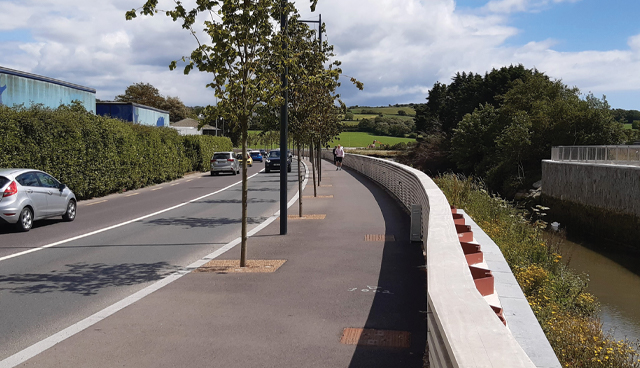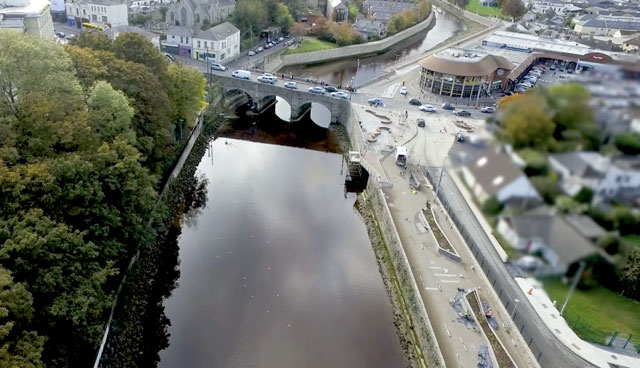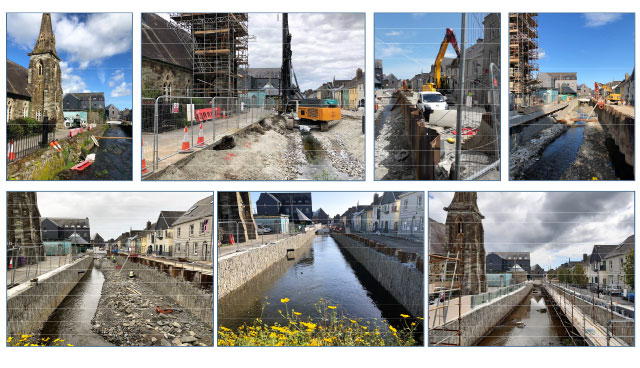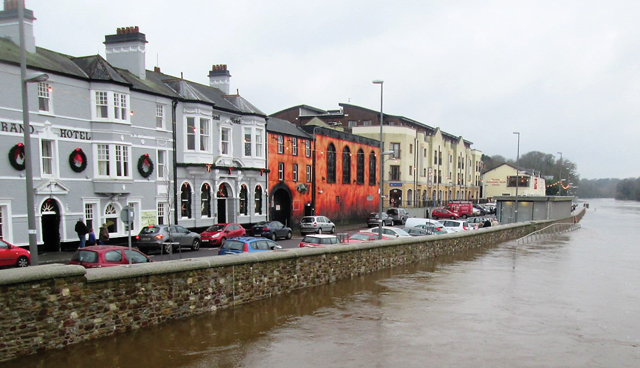Addressing Ireland’s flood risk

Flooding poses a significant risk to many lives, livelihoods, properties and our environment. Those who have experienced flooding events have witnessed its devastating impact. Over the past decade, the Office of Public Works (OPW), Ireland’s lead agency for flood risk management, has assessed and mapped the majority of Ireland’s flood risk. Over the coming decade the OPW, in partnership with Local Authorities, will deliver some 150 flood relief schemes to protect 95 per cent of properties at significant risk from flooding, writes John Martin, Head of Flood Project Management.
The OPW takes a robust, evidence-based approach to identifying potential flood relief solutions. This includes assessing, to an internationally recognised standard, the current flood risk and potential future risk arising from climate projections. The design of flood relief schemes today, that are future proofed through adaptation for climate change, is a key challenge for the OPW.
So too is the reality that Ireland cannot just hope to build its way out of flood risk and climate change. A multi-sectoral approach is required, including avoiding building on flood prone areas and having flood warning systems in place that can help our communities to be resilient and prepared to respond to a flood event. To address this, the OPW is tasked by Government to co-ordinate a cross sectoral approach to managing Ireland’s flood risk.
Investment in the coming decade
The EU Floods Directive requires Member States to cyclically assess their flood risk and plan to manage that risk. In the first cycle, the OPW’s Catchment Flood Risk Assessment and Management (CFRAM) Programme assessed, mapped and in 2018 published Flood Risk Management Plans (FRMPs) for 80 per cent of Ireland’s primary sources of flooding. The maps and plans for each of the 300 studied communities – that are home to almost two thirds of our population – are available to view on www.floodinfo.ie
Overall CFRAM and the FRMPs identified that:
• 34,500 properties have a 1 per cent chance or more of experiencing a flood event (‘100-year’ flood) in any year; and
• 95 per cent of these properties have already been, or can be, protected against these flood events from both the 45 flood relief schemes already completed and continued investment in 151 additional schemes.
The evidence provided by CFRAM supports the Government’s €1 billion planned investment to complete the 151 schemes through the National Development Plan as part of Project 2040. Since May 2018, the OPW has trebled the number of flood relief schemes under design and construction, in partnership with Local Authorities, from 33 to 92. This means that the OPW and Local Authorities have completed, or are now actively working on, projects to protect 80 per cent of those properties to be protected in this decade.
All schemes are designed and constructed in line with best international practice, meaning they protect against the significant floods commonly called the ‘100-year’ flood. The design of and investment in schemes is informed by detailed environmental assessment, public consultation, economic appraisal and are subject to full planning consent processes.
Climate adaptation
The long-term goal adopted by the OPW on climate adaptation is to promote sustainable communities and support the environment through the effective management of the potential impacts of climate change on flooding and flood risk. To that end the CFRAM Programme did not just assess and map today’s flood risk and impact; it also assessed and mapped future risk using the accepted projections for climate change from the Intergovernmental Panel on Climate Change, including both the mid-range, 0.5m mean sea level rise and the high end 1 metre mean sea level rise scenarios. In that way, all OPW flood relief schemes are now designed so that they are adaptable in the future to provide the same level of protection (as today) against future climate change impact. The OPW’s Climate Change Sectoral Adaptation Plan for Flood Risk Management sets out 21 actions and its approach to addressing climate change impact to flood risk management. It was was approved by Government in October 2019.
The OPW supports the use, wherever appropriate and feasible, of natural flood management measures such as natural water retention measures. Developments in this area and opportunities for use of such measures in schemes are closely monitored and assessed. Equally, working with Local Authorities, the OPW aims to integrate flood relief schemes with wider public realm opportunities, to enhance the societal and environmental benefits to communities, a recent example of which can be seen in Clonakilty.
The OPW and Local Authorities recognise that there are many local flooding problems that are best met through local solutions. The OPW’s Minor Works Scheme provides up to €750,000 to Local Authorities to meet 90 per cent of the cost of engineering solutions to local flooding issues. Since 2009, the OPW has funded €39 million for some 600 completed projects that are protecting some 7,000 properties. Approximately two thirds of these are outside of those areas studied by the CFRAM Programme.



|
Case Study: Clonakilty Flood Relief Scheme Clonakilty has been flooded by its rivers and the estuary on numerous occasions, including significant flooding in June 2012. The flood relief scheme, due to be completed later in 2020, will protect some 300 properties. The scheme includes engineered river flood defences throughout the town centre; and tidal defences, including road raising, along the estuary. The scheme also relies on reducing the size of floods by providing a flow control structure and natural storage area for heavy rainfall upstream of the town. The scheme has been built to allow for operational and structural variations into the future to allow for predicted increases in flood risk due to climate change. A strong emphasis through collaboration with Cork County Council is to improve the public realm in the town. The scheme’s finishes are sympathetic to the surrounding environment, with strong focus on natural stonework and locally sourced architectural finishes. |
Cross-sectoral approach to flood risk management
The Government recognises three policy pillars to managing Ireland’s flood risk through the Interdepartmental Flood Policy Co-ordination Group:
Protecting communities through investment in schemes.
Prevention by avoiding construction in flood-prone areas. The CFRAM flood maps provide robust analysis to inform the planning decisions by Local Authorities.
Preparedness by planning for a flood event. This needs data and systems to forecast a flood event. Overseen by the OPW, Met Éireann is implementing a development plan to introduce Ireland’s National Flood Forecasting Warning System.
Future proofing this multisectoral work for the increased risk from climate change aims to ensure today’s decisions and investments lead to sustainable communities and outcomes that benefit this and future generations.

T: 046 942 6000
E: info@opw.ie
W: www.opw.ie





